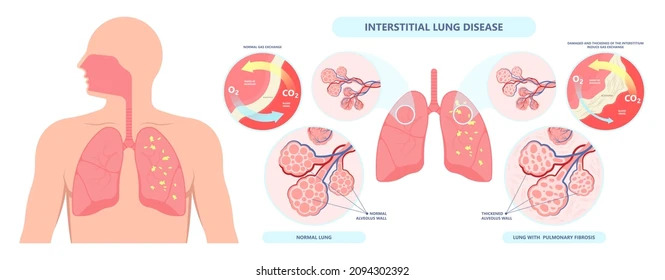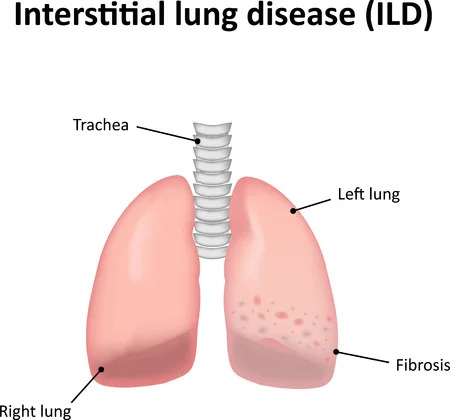Interstitial lung disease is another term for pulmonary fibrosis, or “scarring” and “inflammation” of the interstitium (the tissue that surrounds the lung’s air sacs, blood vessels and airways). Analogy of grapes is good for understanding of nature of ILD lungs. Normal lungs are like grapes and ILD lungs are like raisins. ILD lungs are also shrunken and hard as raisins.
Interstitial lung disease describes a large group of disorders, most of which cause progressive scarring of lung tissue. The scarring associated with interstitial lung disease eventually affects your ability to breathe and get enough oxygen into your bloodstream
Interstitial lung disease can be caused by long-term exposure to hazardous materials, such as asbestos. Some types of autoimmune diseases, such as rheumatoid arthritis, also can cause interstitial lung disease. In some cases, however, the causes remain unknown
Once lung scarring occurs, it’s generally irreversible. Medications may slow the damage of interstitial lung disease, but many people never regain full use of their lungs. Lung transplant is an option for some people who have interstitial lung disease


